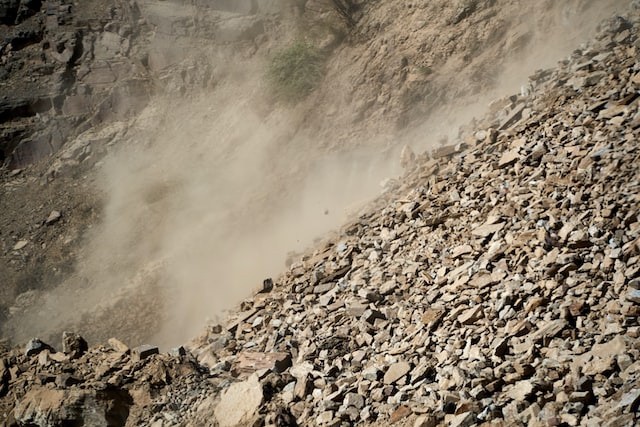Satellite observations have shown that even years after a large earthquake, modest seismic ground shaking can cause powerful landslide acceleration.
Mild earthquakes might still cause landslides

These discoveries contribute to a thorough understanding of the behavior of landslides caused by seismic activity and offer the means for ongoing monitoring to support effective rescue efforts, as per ScienceDaily.
Every year, substantial personal and financial losses are brought on by landslides, an earth's natural hazard that affects everyone. Over 18,000 people died because of landslides between 1998 and 2017 in the world, affecting an estimated 4.8 million people (estimates from WHO).
An example of a landslide caused by rainfall is the recent one that tore across the Italian island of Ischia. Landslides can also be caused by earthquakes, volcanoes, rainfall, or human activities.
The study, which was published in the journal Nature Communications, concentrated on landslides that were accelerated by earthquakes-accelerated landslides (EALs).
These landslides are susceptible to long-term seismic effects and may continue to move quickly long after the earthquake.
The scientists discovered and looked at the activation and recovery of EALs in Central Italy using satellite radar images. Their efforts have produced the first comprehensive EAL inventory, which could be used to help assess the long-term danger of landslides in seismically active locations.
Mitigation and prevention of landslide
In the majority of the world's areas, particularly those that have seen fast population and economic growth, landslides constitute a recurring threat to human life and livelihood, as per Britannica.
Hazards are primarily reduced through preventative measures, such as restricting or even evacuating populations from areas where landslides have historically occurred, banning certain land uses where slope stability is in question, and putting in early warning systems based on the monitoring of ground conditions like strain in rocks and soils, slope displacement, and groundwater levels.
The use of chemical agents to reinforce slope material, the installation of piles and retaining walls, the grouting of rock joints and fissures, the redirection of debris routes, and the rerouting of surface and underwater drainage are some more direct approaches for preventing landslides.
Cost, landslide size and frequency, and the number of at-risk human settlements all place restrictions on such direct solutions.
Retaining wall for landslide protection
Installing a retaining wall is one of the most frequent preventative actions you can do to safeguard your home. There are drainage problems with many older retaining walls, which can lead to weight and pressure accumulation and overflow, as per UnlimitedDrilling.
Retaining walls not only serve aesthetic purposes but they can be made to blend in well with your existing landscaping, their main function is to prevent soil from shifting.
Using plants to support sloped environments is a simple and efficient way to prevent landslides. However, in general, retaining walls require careful planning.
Typically, this preventative strategy works best on slopes that are moderately sloping and not too steep (or if the movement hasn't yet started).
It's crucial to have an expert inspect your property and identify the best kind of retaining wall. The good news is that a properly installed retaining wall will aid in soil retention and safeguard your home against landslide triggers.
© 2025 NatureWorldNews.com All rights reserved. Do not reproduce without permission.





